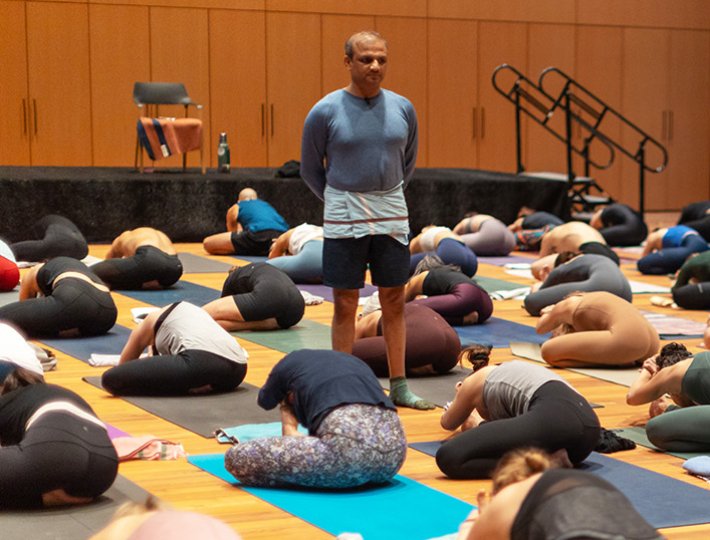Dear John,
“I’m sitting at my kitchen table, making my list of resolutions and how I want to improve in the new year, but I can’t seem to let go of last year’s baggage. How do I truly clean the slate to start fresh?”
From,
Baggage
Dear Baggage,
Thank you for writing in with this question. There is a fresh excitement that comes with each new year. Every January is equipped with the opportunity to tackle new challenges and work toward achieving new goals. Put this way, moving into the new year is a journey forward. This is implied in your question, and also, you recognize that setting resolutions involves wiping the slate clean and shedding last year’s baggage. Therefore, in moving forward, one must also work on making peace with—or coming into a loving acceptance of—the past. This is a vital step in freeing up your psychic energy to look ahead. This spiraling back involves a turning inward and connecting to your heart.
A meditation practice can help you see the past with clarity. You can sit with any “baggage” you may be carrying, and come to honor and welcome all that it is and what it represents. The practice is one of a sacred recognition by which you can move toward the blank slate that you seek. The quest involves befriending your past, and resolving any negative judgements. This concept reminds of this beautiful quote from Rumi: “Your task is not to seek for love, but merely to seek and find all the barriers within yourself that you have built against it.”
Your quest can begin with a meditation devoted toward unearthing the barriers (or the “baggage”) that are now serving as obstacles blocking you from moving toward freedom in the new year. The meditation requires a quieting down and a willingness to step back and truly feel into your body. You can learn to not turn away from what Rumi called the “bandaged place.” He also encouraged a steady gaze on these wounded spaces, for they are, according to Rumi, “where the light enters you.” Meditation allows you to breathe through the body to locate the bandaged places and illuminate the different ways in which the “baggage” of last year may ache, linger, and hurt. You can also notice if you are clinging to the positives of the past and are caught in replicating or enhancing them to such an extent that you may be feeding an unhealthy sense of striving. The practice is about looking inward through eyes of compassion.
Related: A Meditation to Heal Hurt Feelings
As you sit, reflect, and examine last year’s baggage, do your best to see if you can recognize what you are holding on to? Where are the places in your body that you are tightening and gripping as a result of any emotional clinging? Spend time here, deepening this inquiry. As best as you can, see if you can explore the different levels of thoughts, emotions, and body sensations as a way to gain more intimacy and familiarity with the “baggage,” its origin, and how you may work to dis-identify from it, and offer yourself nourishment in the practice.
Self-nourishment can be a simple offering made by placing your own hands on your heart, and reciting a few phrases of love, kindness, and compassion to yourself. A phrase as simple as “I feel this suffering, and I love you” can initiate a deepening of insight into the nature of one’s baggage and how to effectively release it, essentially, through learning to love it. Thich Nhat Hanh teaches that suffering, or dukkha, in Buddhism has been identified as “a holy truth.” He goes on to say that “the contemplation of suffering can bring about insight on how to get out of suffering and transform it.” This is a critical practice that can be quite difficult.
If you find that it is too hard to accomplish this practice on your own, consider enlisting an experienced guide or spiritual helpers to assist you. These could include visualizing the image of someone in your life who represents this kind of unconditional love. If you feel that you do not have a person like this in your life, you can still do this practice. Take a moment to think about a spiritual teacher with whom you connect. It can be some of history’s most well-known teachers such as Buddha, Jesus, Krishna or one of the various saints across traditions. Or it may be your local teacher. Perhaps, as another option, you may have a sacred power place in nature you can visit to feel this love from the earth. There are many possibilities.
Also, keep in mind, releasing or wiping the slate clean will likely not happen instantaneously or overnight. Rather it is a practice that may bear fruits over the course of the upcoming year with deliberate and committed practice. Similar to how we must make many trips in a year to the grocery store to gather the necessary food and water for our physical sustenance, we must make many visits inward to our heart to gather the necessary spiritual nourishment for healing, growth, and transformation.
Bottom line: Cleaning the slate is an ongoing process. The spiraling back involves a dedicated meditative practice in which one learns, over and over again, to offer to oneself unconditional love and care. Remember the words of Rumi: “Don’t turn away. Keep your gaze on the bandaged place. That is where the light enters you.” I thank you for writing in and I wish you a wonderful upcoming year that is full of “light” and love. Many blessings to you on your travels.
Warmly,
John








Comments (0)